
Website engagement is the measure of how well your website attracts, retains, and satisfies your visitors.
It’s all about making sure that your visitors find value in your content and take the right actions.
To put this into perspective, a study by Adobe claims that 38% of people will stop engaging with a website if the content or layout is unattractive.
So creating an engaging website is absolutely necessary, without a doubt.
Apart from that, website engagement is important because it can help you increase brand awareness, build trust and loyalty, and improve customer retention and advocacy.
In this blog, we will explore some of the strategies and techniques you can use to master website engagement and boost your online success. Whether you want to improve your site’s design, optimize your content, leverage social media, or use analytics and feedback, we have got you covered.
Understanding Website Engagement Metrics
Website engagement metrics are indicators of how well your website is performing in terms of attracting, retaining, and satisfying your visitors. They can help you measure the effectiveness of your website design, content, and marketing strategies.
But how do you measure engagement, and what metrics should you use?
There are different approaches and metrics to track engagement, depending on your goals and objectives.
Some of the common methods are:
- Surveys and feedback forms: These are direct ways to ask your visitors about their experience, satisfaction, and preferences. You can use tools like Google Forms, Qualaroo, or Typeform to create and distribute surveys and feedback forms.
However, these methods rely on the willingness and honesty of your visitors to respond, and they may not reflect the actual behavior of your visitors. - Web analytics: These are tools that collect and analyze data about your website traffic, such as Google Analytics, Adobe Analytics, or HubSpot. It can provide you with various metrics that reflect the behavior and interaction of your visitors, such as page views, bounce rate, time on page, pages per session, traffic sources, conversion rate, etc.
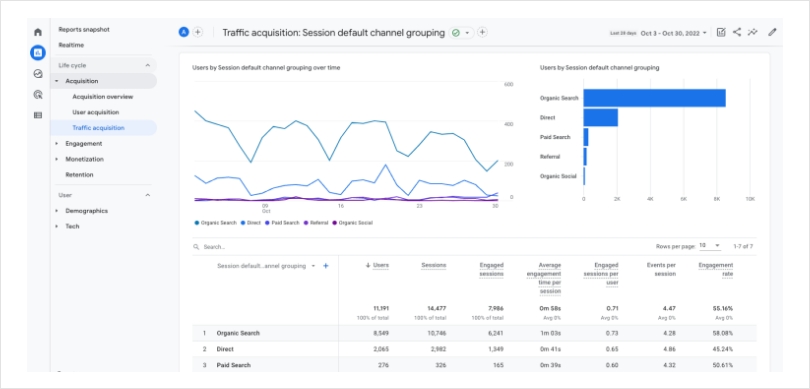
Image Source: Blue Hills Digital
- User behavior tools: These are tools that track and visualize how visitors use your website, such as Hotjar, Crazy Egg, or Mouseflow. User behavior tools can provide you with website engagement metrics such as heatmaps, scroll depth, click maps, session recordings, etc.
These metrics can help you understand how visitors navigate your website, what they pay attention to, what they ignore, what they click on, etc. However, these metrics may not tell you why your visitors behave the way they do or what they think about your website.
As you can see, there is no one-size-fits-all approach or metric to measure engagement. You need to choose the methods and metrics that best suit your needs and goals. You also need to combine different types of data and metrics to get a holistic view of engagement.
To help you get started, here are some of the most important engagement metrics that you should track:
- Conversion rate: This is the ultimate measure of how well your website is achieving its purpose – whether it is to sell a product, generate leads, collect email subscribers, etc.
A high conversion rate means that your website is effective in persuading your visitors to take the desired action or goal. - Bounce rate: This is the measure of how engaging your website is in terms of retaining your visitors’ attention and interest. A low bounce rate means that your website is able to capture your visitors’ curiosity and make them want to explore more of your content and pages.
- Traffic sources: This is the measure of how well your website is attracting visitors from different channels and platforms, such as organic search, social media, emails, referrals, etc. A diverse and balanced traffic source means that your website has a strong online presence and reputation and that you are reaching out to your target audience effectively.
- Event tracking: This is the measure of how well your website is engaging your visitors in terms of interaction and feedback. Event tracking can help you understand what actions your visitors take on your website, such as clicking a button, filling out a form, downloading a file, etc.
These actions can provide you with valuable insights into your visitors’ behavior, preferences, and needs.
By tracking these metrics over time and comparing them with industry benchmarks or competitors’ data, you can identify the strengths and weaknesses of your website and optimize them accordingly.
Read More - How to Generate Leads for Your Business in 2023
The Importance of Tracking Website Performance Metrics
Website performance metrics are indicators of how fast and reliable your website is in terms of loading, rendering, and responding to your visitors’ requests. They can help you measure the quality and efficiency of your website’s technical aspects, such as server speed, page size, browser compatibility, etc.
These metrics are important because they can have a significant impact on your website’s engagement, conversion, and retention rates.
According to various studies and reports:
A one-second delay in page load time can reduce conversions by 7%, and a 100-millisecond improvement in page load time can increase conversions by 8%.
![]()
Image Source: We Make Websites
Website performance metrics play a crucial role in the success of any online business or digital presence. They are essential indicators that reveal how well a website is functioning in terms of speed, reliability, and overall user experience.
By measuring various technical aspects of a website, such as server speed, page size, and browser compatibility, performance metrics provide valuable insights to website owners and developers, enabling them to make informed decisions to enhance the website’s performance.
Analyzing User Interactions: Techniques and Insights
Do you want to know what your website visitors are doing on your site? What do they like, what do they not like, and what do they want to achieve?
If yes, you need to start by analyzing user interactions!
User interactions are the actions that users take on your website, such as clicking a button, filling out a form, scrolling a page, etc.
They can tell you a lot about how users engage with your website, what they are interested in, and what they are trying to achieve.
There are different ways and tools that you can use to analyze user interactions, such as:
- Event tracking: This is a way of measuring specific user actions on your website, such as downloads, sign-ups, purchases, etc.
You can use tools like Google Analytics or Bing Webmaster Tools to set up and track events on your website. Event tracking can help you see how well your website features and content are working. - Heatmaps: These are pictures that show how users interact with your website elements, such as links, images, buttons, etc. You can use tools like Hotjar or Crazy Egg to make and analyze heat maps on your website.
Heatmaps can help you find out the most and least popular areas of your website and improve them accordingly.
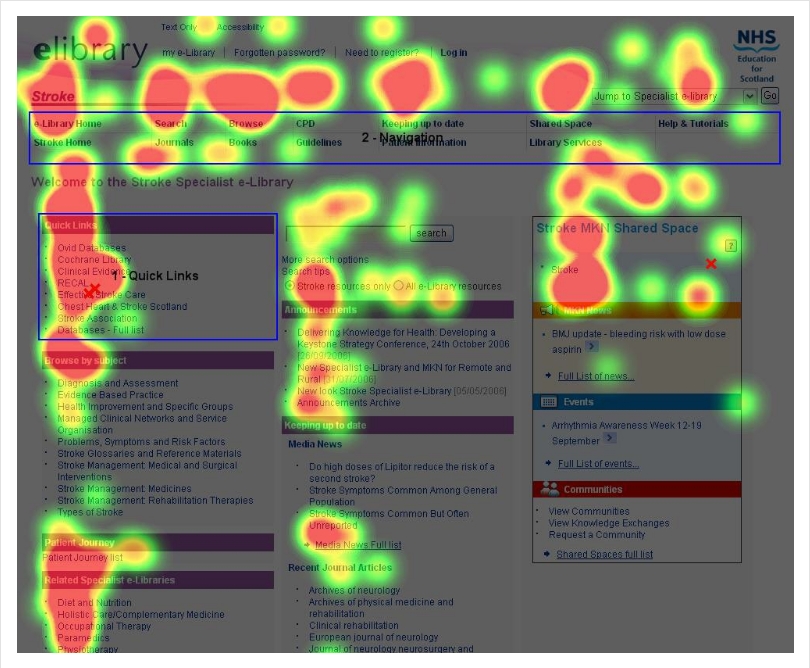
Image Source: Thought Mechanics
- Session recordings: These are videos of individual user sessions on your website, showing their mouse movements, clicks, scrolls, etc.
You can use tools like FullStory or Mouseflow to record and watch user sessions on your website. Session recordings can help you watch user behavior and experience in real-time and fix any usability issues or bugs on your website.
By adopting these ways and tools, you can learn a lot about user interactions on your website and use them to make your website better in terms of design, functionality, and content. This will ultimately lead to more user engagement, retention, and conversion on your website.
Effective Website Engagement Techniques
Website engagement is the degree to which your website visitors interact with your content, features, and functionalities. A high level of website engagement indicates that your visitors are finding value, relevance, and satisfaction in your website.
But how do you increase and improve website engagement?
There are various website engagement techniques and tools that you can use to make your website more engaging, appealing, and interactive for your visitors.
Here are some of the diverse website engagement techniques that you can use:
Crafting Compelling Popups to Drive User Interaction
Content marketing is a powerful strategy that revolves around creating and sharing valuable, relevant, and consistent content to engage and retain your target audience. It goes beyond blatant promotion and focuses on providing useful information that genuinely helps your audience.

By offering educational content, you can establish your authority in your industry and build trust with your potential customers. Tools like WordPress or Medium are excellent platforms to manage and publish content effectively.
Boosting Engagement with Gamification
Email marketing is a versatile tool that allows businesses to establish a direct line of communication with their target audience. By tailoring messages to individual preferences and behaviors, you can create a sense of personal connection, increasing the likelihood of customer loyalty and repeat business.
On top of that, with the power of data analytics, you can track the performance of your email campaigns, refining your strategies over time for even better results. Whether you’re aiming to showcase new products, share valuable content, or simply stay top-of-mind with your audience, email marketing remains an essential component of any successful digital marketing strategy.
With user-friendly platforms like Mailchimp or HubSpot, managing and automating these campaigns has never been more accessible, making it an indispensable tool for businesses looking to thrive in the digital age.
Implementing Effective Personalization Strategies
Social proof is an indispensable element in any marketing strategy. It operates as a powerful tool for establishing trust and credibility in the eyes of potential customers.
When you display glowing testimonials, five-star reviews, high ratings, and insightful case studies from your satisfied clients, you provide tangible evidence of your product or service’s quality and reliability. This not only reassures prospective buyers but also influences their decision-making process positively.
Leveraging social proof can significantly boost your brand’s reputation and ultimately drive conversions. Platforms such as Trustpilot or Bazaarvoice are invaluable resources that enable you to easily collect and showcase authentic customer experiences and feedback, reinforcing your brand’s trustworthiness and appeal to a wider audience.
Enhancing Engagement through Social Media Integration
Offering real-time assistance and support through a chat window on your website is a game-changer for customer satisfaction and loyalty.
In today’s fast-paced digital world, customers value quick and convenient communication. Live chat fulfills this need by providing immediate responses to their questions or concerns. This not only enhances their experience but also increases the likelihood of converting them into loyal customers.
Tools like REVE Chat or Zendesk Chat make it easy to engage with your website visitors in real time, enabling you to address their queries promptly and provide the assistance they require. With this, you can create a seamless and responsive customer support system that sets your brand apart and fosters lasting customer relationships.
Captivating Audiences with Video Marketing
These unobtrusive messages can appear on your website or browser, alerting visitors about new content, offers, updates, or other relevant information. By utilizing push notifications effectively, you can increase website engagement, retain your audience, and boost conversions.
Have you thought about utilizing push notifications on your website? Tools like OneSignal or PushEngage can help you send these notifications and keep your visitors informed and engaged.
Website engagement strategies are the methods and techniques that you use to make your website more attractive, interactive, and valuable for your visitors.
By implementing effective website engagement strategies, you can enjoy many benefits for your business, such as:
- Increased website traffic: By creating and distributing valuable, relevant, and consistent content, you can attract more visitors to your website from different sources, such as organic search, social media, email, referral, etc.
- Improved website performance: By optimizing your website’s technical aspects, such as speed, design, functionality, and compatibility, you can improve its quality and efficiency. This can enhance your visitors’ experience and satisfaction and reduce bounce rates.
- Enhanced user engagement: By using various tools and features such as popups, gamification, personalization, live chat, push notifications, etc., you can engage visitors on your website and elevate their overall experience.
- Higher conversion rate: By using various techniques and tools like A/B testing and social proof, you can persuade your visitors to perform certain actions on your website, such as downloads, sign-ups, purchases, and much more
Case Study
Gillette Case Study
Gillette wanted to increase its brand awareness and sales among young men by launching a new product line called Gillette BODY, designed for body grooming. Gillette used a digital-first approach to reach its target audience and showcase its product benefits.
They created a series of engaging videos featuring celebrities and influencers who shared their personal stories and tips on body grooming. The videos were hosted on YouTube and promoted through Google Ads, social media, and email marketing.
Gillette also created a landing page on its website where visitors could learn more about the product, watch the videos, and buy it online.
The videos generated over 6 million views, 50,000 likes, and 12,000 comments on YouTube.
The landing page had a 49% higher conversion rate than the average Gillette page. The campaign also increased Gillette’s brand favorability by 12% and purchase intent by 28% among young men.
This case study shows how Gillette used a video marketing strategy to drive engagement and conversions for its new product launch.
By creating relevant and entertaining content for its audience, Gillette was able to increase its online presence and sales.
Bose Case Study
Bose is a global leader in audio equipment, known for its innovative products and high-quality sound. However, Bose faced some challenges in its digital marketing strategy, such as low conversion rates, high costs, and limited reach.
Bose wanted to improve its online performance and connect with more customers who are looking for audio solutions.
To achieve this goal, Bose partnered with Google and used automation tools to optimize its digital campaigns. Bose used Smart Bidding to automatically adjust its bids based on various signals, such as device, location, time of day, and audience.
Bose also used Responsive Search Ads to create flexible and relevant ads that matched the user’s search intent. Additionally, Bose used Dynamic Search Ads to target users who searched for terms related to Bose products or categories.
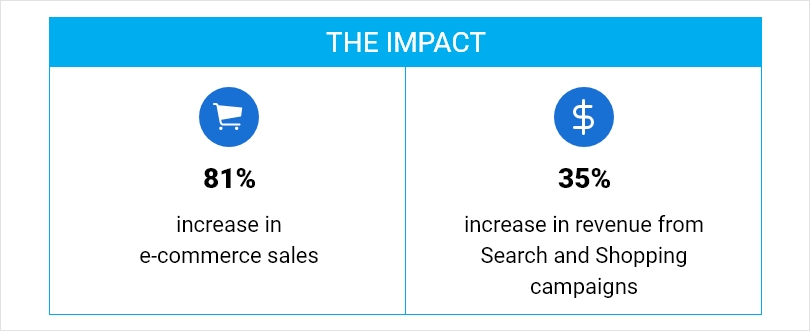
Image Source: Think with Google
By using automation tools, Bose was able to improve its digital marketing efficiency and effectiveness. Bose saw a significant improvement in its key metrics, such as revenue, conversion rate, and cost per acquisition.
Bose also expanded its online presence and reached more potential customers across the web. The case study demonstrates how automation can help marketers overcome their challenges and grow their business.
Strategies to Engage Website Visitors
There are plenty of techniques and strategies you can use to engage website visitors. Let’s take a look at some of the most popular ones:
- Add live chat for real-time assistance: This technique allows you to provide instant and personalized support to your website visitors through a chat window. Live chat can help you increase your customer satisfaction, retention, and loyalty.
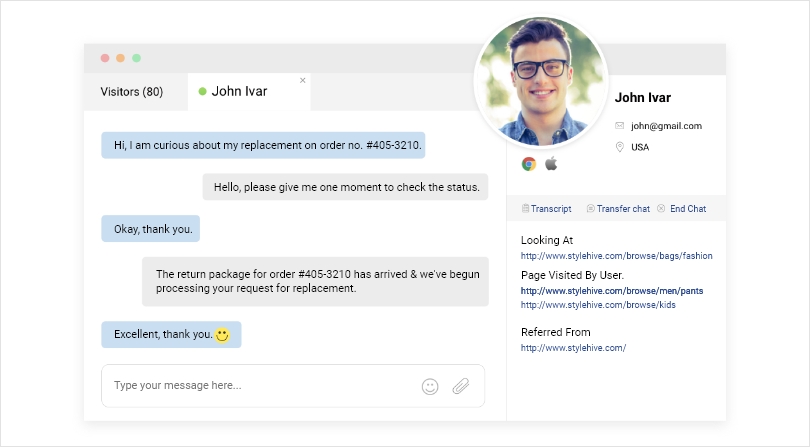
- Deploy AI bots: With the use of artificial intelligence and natural language processing, you can create and deploy chatbots that can interact with your website visitors 24×7. AI bots can help you answer common questions, provide information, collect feedback, and generate leads.
You can use tools like Dialogflow or IBM Watson Assistant to create and manage AI bots on your website.
- Provide live assistance with co-browsing & video chat: Live Assistance allows you to share your website visitors’ screens and guide them through complex tasks or issues. Co-browsing can help you improve your customer service, trust, and engage website visitors. You can also use video chat to communicate with your visitors face-to-face and enhance the human touch.
- Create interactive and engaging content: By creating helpful website content, you can invite your visitors to participate, interact, and share. Interactive and engaging content can help you educate your visitors, establish your authority, build trust, and drive action. You can use tools like Outgrow or Typeform to create interactive and engaging content on your website.
Measuring and Improving Website Engagement
Website engagement is the degree to which your website visitors interact with your content, features, and functionalities. A high level of engagement on websites indicates that your visitors are finding value, relevance, and satisfaction.
But how do you increase and improve website engagement?
There are various tools that you can use to make your website more engaging, appealing, and interactive for your visitors.
Here are some of them:
Picreel
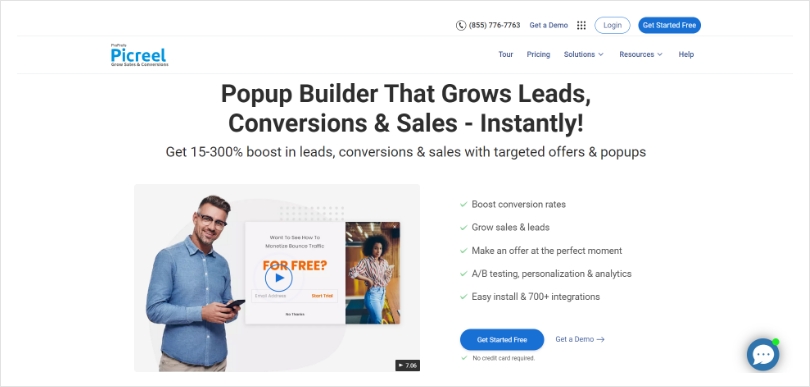
Picreel is an all-in-one tool to enhance website engagement by creating captivating popups that grab visitors’ attention, generate leads, boost conversions, and reduce bounce rates.
With Picreel, you can effortlessly create and customize popups with various designs, colors, texts, and effects, even using advanced HTML/CSS mode. You can easily track and measure popup performance through analytics and A/B testing while seamlessly integrating with platforms like WordPress, Shopify, Mailchimp, and HubSpot to amplify your website and email marketing campaigns.
ContentStudio
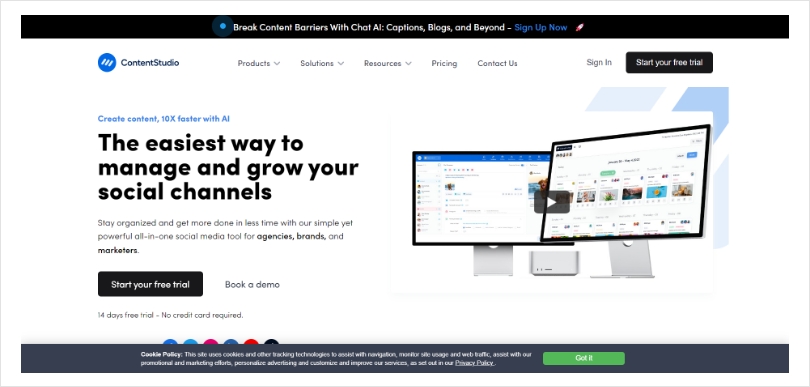
ContentStudio allows you to discover, plan, and publish content for your website and social media platforms. It can help you create and distribute valuable, relevant, and consistent content to attract and retain your target audience.
You can use ContentStudio to find trending topics and keywords, curate content from various sources, schedule and automate your posts and measure your results.
Hotjar

Hotjar is a tool that lets you track and visualize how people engage with your website. It shows you heatmaps, scroll depths, click maps, and session recordings, giving you insights into how visitors interact with your site.
With Hotjar’s help, you can understand what parts of your website need improvement and make it a better experience for your visitors. It’s like having superpowers to see through their eyes and optimize your site accordingly.
Read More - Top 35 Website Engagement Tools to Uplift Your Business in 2023
Optimize Website Engagement Through Effective Strategies
In the fiercely competitive digital landscape, enhancing website engagement stands as a pivotal factor for achieving unparalleled online success.
A captivating and engaging website becomes the magnet that irresistibly attracts potential customers, inviting them to explore and immerse themselves in the offerings and stories presented.
This blog covers ways to boost website engagement, which include content marketing, personalized emails, social proof, live chat, push notifications, and more.
But all of this is only possible with the right set of tools.
Picreel is a great tool for creating and launching your website popup ideas. It has a simple interface that is easy to use and explore. You can also try Picreel for free for 15 days, and see how it works for you before you decide to buy it.
Frequently Asked Questions
What are some common mistakes that can negatively impact website engagement?
Common website engagement mistakes include slow loading times, cluttered layouts, non-mobile-friendly designs, excessive pop-ups, confusing navigation, low-quality content, difficult-to-read fonts, noisy autoplay videos, mandatory account creation, and neglecting user feedback. These issues can frustrate visitors, drive them away, and hinder their overall experience, resulting in reduced engagement and potential loss of valuable traffic and conversions.
How do I know if my website’s engagement metrics are good or bad?
Determining whether your website’s engagement metrics are good or bad depends on various factors such as your industry, website goals, and audience size.
Key engagement metrics to consider include bounce rate, average session duration, pages per session, and conversion rates. Generally, a lower bounce rate, longer average session duration, and higher pages per session are positive indicators of good engagement.
However, there’s no one-size-fits-all answer, as acceptable ranges can vary. To evaluate your website’s performance effectively, compare your metrics with industry benchmarks and monitor trends over time.
FREE. All Features. FOREVER!
Try our Forever FREE account with all premium features!







